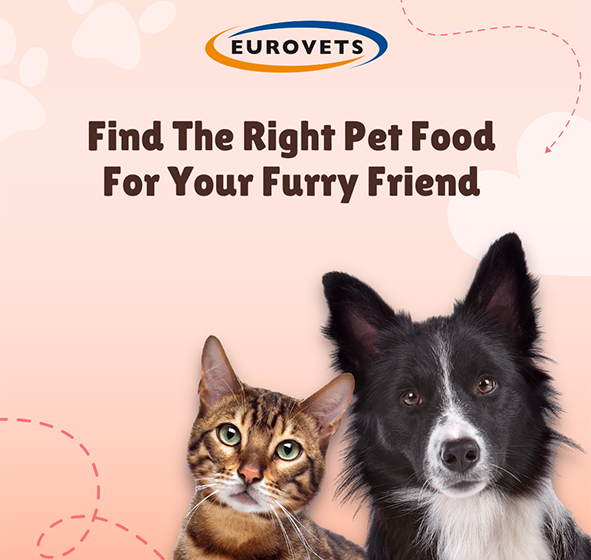Obesity is the Leading cause of Diabetes in Pets

Eurovets cautions pet owners to read the pet food labels carefully to determine the ingredients and have a good estimate of weight ranges and caloric needs by breed and size.
Dubai, United Arab Emirates, Feb 2023
Obesity or extreme build-up of body fat has become a widespread dilemma among pets these days. It can also reduce the life span of pet animals, other than affecting their general health. Such pets may develop acute health problems such as diabetes and several other illnesses.
Some common symptoms of diabetes in pets include excessive water drinking and increased urination, weight loss, decreased appetite, cloudy eyes, chronic or recurring infections and more. While obesity is a common problem, here are some key questions most pet owners have What causes obesity in pets?
Obesity triggers when there is unnecessary food intake and insufficient consumption of energy. It can affect all kinds of pets and the most common reasons are overfeeding and lack of exercise, although some diseases like hypothyroidism and insulinoma can also cause obesity in pets.
What type of pet can suffer from obesity?
Studies suggest thatobesity can hit any type of pet. With cats and dogs, it increases with age until approximately seven years of age. In addition, it increases with breed size, although the breeds most affected are smaller breeds. Pugs top the list of overweight breeds, with 64% diagnosed as obese. However, smaller pets are more successful at losing weight than larger ones.
How to find out if your pet is obese
Keep a regular track of your pet’s body condition. Undertake the rib or standing test. Gently run hands along either side of the rib cage, and if you can feel, but not see each rib than your pet is healthy. However, if your pet has the abdomen or stomach sagging, it’s time to see a veterinary specialist.
How to Save Pets from Obesity
Food is the main cause of obesity. Know exactly how much to feed your pet. The math is, 60-70% diet and 30-40% exercise. Eurovets cautions pet owners to read the pet food labels carefully. It not only helps determine the ingredients, but also helps pet owners with a good estimate of weight ranges and caloric needs by breed and size. In terms of food quality, opt for fresh food including lean protein like chicken, turkey, fish, eggs and tofu, and fiber through fresh vegetables such as Brussels sprouts, broccoli, cauliflower, kale, cabbage and spinach.
Eurovets recommends Calibra, a pet food range formulated by veterinarians to meet the dietary needs of the much-loved canine and feline companions. Calibra offers nutritionally balanced – hypoallergenic food that is free from chemical preservatives and artificial coloring. The products are suitable even for both cats and dogs that are suffering from digestive problems, kidney issues, and food allergies. The brand’s hypoallergenic and super premium wellness diets are available in a number of flavors such as chicken, lamb, salmon, and duck.
Apart from the numerous health benefits it offers, Calibra’s products also have a positive impact on the animal’s coat and skin. Their products are also available as canned wet diet food, which is often recommended due to digestive reasons or due to problems such as eating pellets.
Given the advanced food options that pets are exposed to, it is critical that pet owners vet and carefully select brands and food that suit their pet needs.





